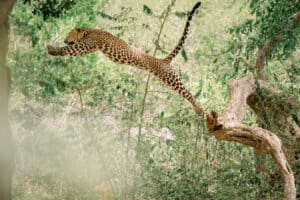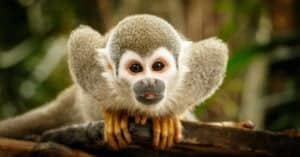Have you ever noticed the very strange-looking rear ends of some monkeys? You might see monkeys with blue butts and even monkeys with red butts. But how many and which monkeys have brightly colored bottoms? As it turns out, more than you might think. In fact, there are several different species of monkeys with red or blue butts, and they live all over the world. But which kind of monkeys have red butts, and which ones have blue butts? How do you tell them apart? First, let’s look at some of the more familiar types of red-butt vs blue-butt monkeys.
Blue-Butt Monkeys
There are several species of monkeys that have blue rear ends. Let’s look at three of the most common blue-butt monkeys vs red-butt monkeys.
Mandrill

Mandrills are monkeys with blue butts that they use to attract mates, scare predators, and regulate their body temperature.
Mandrills are large primates closely related to the baboon. These animals inhabit the tropical forests of Africa and are monkeys with blue butts. Additionally, the mandrill is the largest non-ape primate. It is arguably the most colorful, with a trademark bright red and blue face and a very bright and colorful butt. These are secondary sexual characteristics, present in both sexes but much more vibrant in males. Scientists believe that they use this feature to attract mates and intimidate rivals.
The blue part of a mandrill’s butt is skin, not fur. The skin is covered in tiny ridges and bumps, each containing a cluster of pigment cells. As a result, the skin looks like a mosaic of blue, purple, and pink tiles when viewed up close. Underneath the skin, there are blood vessels that help to regulate the monkey’s body temperature.
Lesula
Lesula is an Old World monkey species living in the Congo‘s Lomami Basin. This monkey has startlingly characteristic human-like eyes and a blue bottom. Though the international scientific community was unaware of its existence until 2007, the local population was aware of its presence for some time.
The lesula is the second new African monkey species that scientists have discovered since 1984. They found this new species in 2007 and confirmed this discovery in a 2012 publication.
Researchers remain intrigued by this species’ eyes that strongly resemble its human cousins. Some primatologists speculate that this primate’s blue bottom is also valuable for attracting mates. However, the exact reason for the blue butt is still unknown. Nevertheless, the lesula is a fascinating new monkey species that will continue generating interest and excitement among scientists and laypeople.
Blue-Butt Vervet Monkey

Vervet monkeys with blue butts help attract females and only the males have this feature.
©Nils Rinaldi / CC BY 2.0, Flickr – License
Vervet monkeys are an Old World monkey species native to Africa. The most unusual attribute of this species is its blue rear end. In addition, male vervet monkeys have blue scrotum and nether regions that turn pale blue, turquoise, or white in adulthood. Another name for this species is the green monkey due to the greenish-colored fur on its back. This monkey species inhabits woodlands, savannahs, and forests. Only males have blue rear ends. Primatologists also believe this feature helps to attract females.
Red-Butt Monkeys
Unlike many monkeys with blue butts, monkeys with red butts are mostly females. Also, monkeys with red butts are relatively common like monkeys with blue butts. But, again, the reason seems closely tied to mating. Females use their red butts to signal males when they’re in heat and ready to mate. So let’s look at the red-butt vs blue-butt monkeys.
Red-Butt Baboons
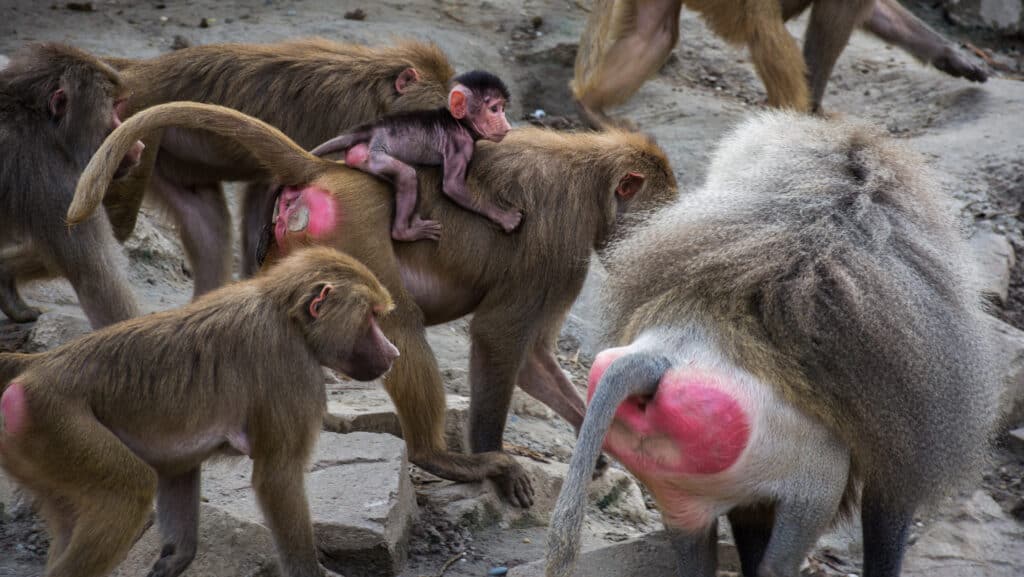
©Nik Bruining/Shutterstock.com
Baboons are one of the most popular species of monkeys. They are easily recognizable by their long, dog-like snouts and thick fur. But one of the most distinguishing baboon features is their bright red bottoms. So why do baboons have red backsides? There are a few theories. One is that the red color is a way to attract mates. Another idea is that the red color serves as a warning to predators. The bright color may intimidate predators and make them think twice about attacking a baboon.
Rhesus Macaques
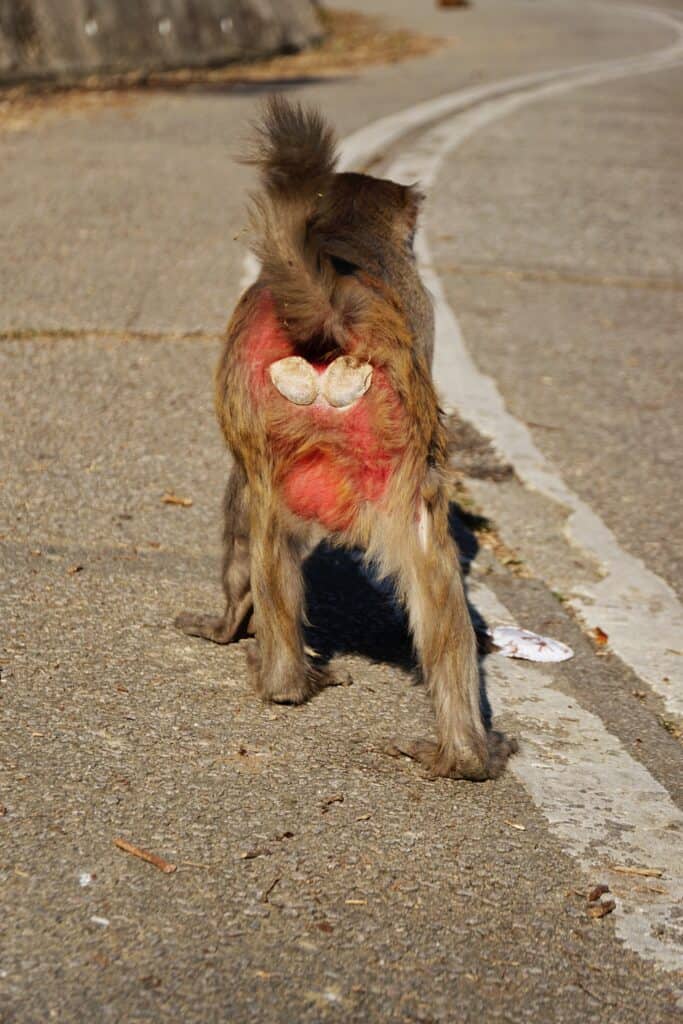
Female Rhesus Macaques with the reddest butts are most likely to attract mates.
©iStock.com/Yoyochow23
The Rhesus Macaque, also known as the red bottom monkey, is a species of Old World monkey native to Asia. These monkeys have distinctive reddish-brown fur and long tails, are social and live in groups of up to 30 individuals. Females reach sexual maturity at around three years, while males reach maturity at approximately four years. Rhesus macaques typically mate during the summer months. After a gestation period of 155 days, the female will give birth to a single infant. Females are characterized by their very red bottoms, which are essential to mate choice. Studies also show that females with redder bottoms are more likely to acquire a mate.
Celebes Crested Macaque
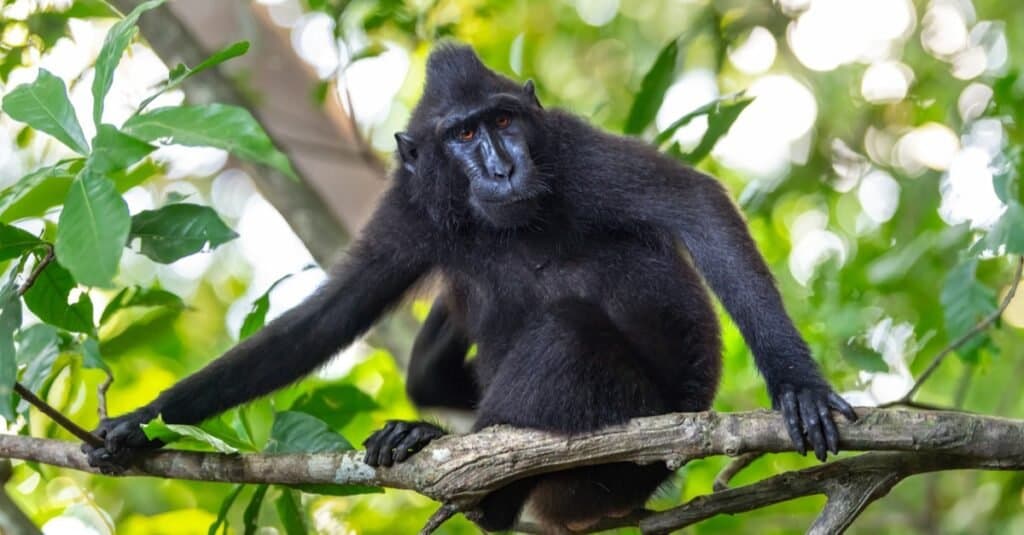
In the battle between blue butt monkeys vs red butt monkeys, the Celebes crested macaque must be by far the ugliest.
©Sergey Uryadnikov/Shutterstock.com
The Celebes crested macaque is a species of monkey that is found primarily in Indonesia. These monkeys are relatively large and have very short tails. One of the most distinctive features of the Celebes crested macaque is their red behinds. In addition, female Celebes crested macaques have bright red bottoms when they are in heat. During the mating season, the backsides of female Celebes crested macaques swell enormously. However, on normal days, female Celebes crested macaques butts look paler than their male counterparts.
So, there you have it – in the blue butt monkey vs red butt monkey scenario, you decide on the winner. If there is a winner in this comparison, that is!
Next Up – More Monkey-Related Blogs
- 10 Incredible Aye Aye Facts
- Mandrill vs. Gorilla: Who Would Win A Fight?
- Crab-eating Macaque
- 6 Types Of Monkeys In Florida
The photo featured at the top of this post is © Try_my_best/Shutterstock.com
Sources
- National Geographic, Available here: https://www.nationalgeographic.com/animals/article/primates-monkeys-blue-scrota-genitalia/
- Futurity, Available here: https://www.futurity.org/new-monkey-species-sports-bright-blue-bottom/
- National Geographic, Available here: https://www.nationalgeographic.com/animals/mammals/facts/rhesus-macaque/
- Animal Diversity, Available here: https://animaldiversity.org/accounts/Macaca_nigra/
Thank you for reading! Have some feedback for us? Contact the AZ Animals editorial team.




